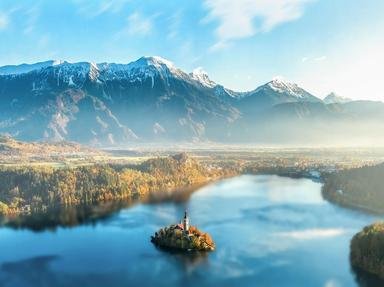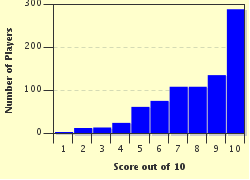Quiz Answer Key and Fun Facts
1. The Slovenian coat of arms shows mountains, stars (representing the important medieval ruling family of Selje) and wavy lines to represent rivers and the sea. On which of these bodies of water is the European country of Slovenia situated?
2. Located as it is in the southern part of central Europe, Slovenia has been a part of many different nations over time. Which of the following was NEVER a state of which Slovenia was a part?
3. The Divje Babe cave, near Cerkno, has had its praises sung as the site for the discovery of what is considered to be the world's oldest example of which of these items?
4. The Slovenian city of Novo Mesto has been nicknamed "City of Situlas" because of the large number of situlas that have been dug up in the area. What is a situla?
5. Slovenia is a country of geographic diversity. Which of these statements is NOT true?
6. What region of Slovenia gave its name to a type of landscape formed when limestone bedrock is dissolved in running water to form underground caves and sinkholes?
7. The Slovenian coat of arms includes a stylized three-peaked mountain, representing the country's highest point. Which mountain, whose name means "three-headed", is being represented?
8. Slovenia has long been a cultural crossroads, with many languages being spoken at different times in its various regions. Which of the following is one of the predominant linguistic and cultural groups to be found there?
9. The beautiful white horses used by the Spanish Riding School of Vienna are all members of a breed that was developed in Slovenia. Near which Slovenian town, which gave its name to the breed, was the original stud farm established by the Hapsburgs in the 16th century?
10. In "Alice's Adventures in Wonderland", there is a famous tea party scene in which one of the attendees keeps falling asleep in a teacup. Which of these characters, who might well find a visit to Slovenia a risky business, was it?
Source: Author
looney_tunes
This quiz was reviewed by FunTrivia editor
Pagiedamon before going online.
Any errors found in FunTrivia content are routinely corrected through our feedback system.

